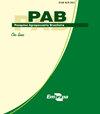Degradability of the dry matter and crude protein of fruits of Chloroleucon mangense and Acacia cochliacantha in sheep
IF 0.7
4区 农林科学
Q3 AGRICULTURE, MULTIDISCIPLINARY
引用次数: 0
Abstract
Abstract The objective of this work was to determine the nutritional content and the degradability of the dry matter and protein of fruits of Chloroleucon mangense and Acacia cochliacantha and of a 1:1 mixture of both, offered as supplements to Rambouillet sheep. In situ ruminal degradation was evaluated in three adult rams, fitted with a rumen cannula, with different incubation times of 0, 6, 12, 24, 48, and 72 hours. Protein intestinal degradability was quantified with a three-step procedure: in situ ruminal incubation, in vitro enzymatic digestion, and abomasal-intestinal digestion. The fruits of C. mangense and A. cochliacantha contain 21 and 12% crude protein, 47 and 56% neutral detergent fiber, 31 and 43% acid detergent fiber, and 0.9 and 6.0% condensed tannins, respectively. The fruits of C. mangense showed a higher nutritional value and a higher dry matter and crude protein degradability (p<0.05) than those of A. cochliacantha and the 1:1 mixture. The amount of protein that reaches the small intestine is higher for the 1:1, which is an indicative that its tannin concentration is enough to increase the bypass protein that can be absorbed in the small intestine.锰绿果和金合欢果实干物质和粗蛋白质在绵羊体内的降解率
摘要本试验旨在测定锰绿松果和金合欢果的营养成分和干物质及蛋白质的降解率,并将两者以1:1的比例混合,作为朗布依埃羊的补充饲料。采用0、6、12、24、48和72小时的不同孵育时间,对3只成年公羊进行原位瘤胃降解评价。蛋白质肠道降解率通过三步程序进行量化:原位瘤胃培养、体外酶消化和胃-肠消化。芒萁果实粗蛋白质含量分别为21%和12%,中性洗涤纤维含量分别为47%和56%,酸性洗涤纤维含量分别为31%和43%,缩合单宁含量分别为0.9%和6.0%。芒草果实的营养价值、干物质和粗蛋白质降解率均高于棘果和1:1混合物(p<0.05)。达到1:1的蛋白质到达小肠的量较高,说明其单宁浓度足以增加小肠可吸收的旁路蛋白。
本文章由计算机程序翻译,如有差异,请以英文原文为准。
求助全文
约1分钟内获得全文
求助全文
来源期刊

Pesquisa Agropecuaria Brasileira
农林科学-农业综合
CiteScore
1.20
自引率
0.00%
发文量
45
审稿时长
9-18 weeks
期刊介绍:
Pesquisa Agropecuária Brasileira – PAB – is issued monthly by Empresa Brasileira de Pesquisa Agropecuária – EMBRAPA, affiliated to Ministry of Agriculture, Livestock and Food Supply. PAB publishes original scientific-technological articles on Plant Physiology, Plant Pathology, Crop Science, Genetics, Soil Science, Food Technology and Animal Science.
Its abbreviated title is Pesq. agropec. bras., and it should be used in bibliographies, footnotes, references and bibliographic strips.
 求助内容:
求助内容: 应助结果提醒方式:
应助结果提醒方式:


